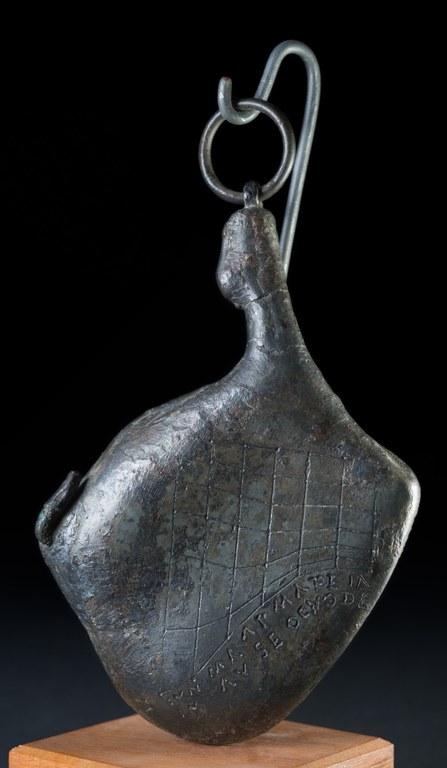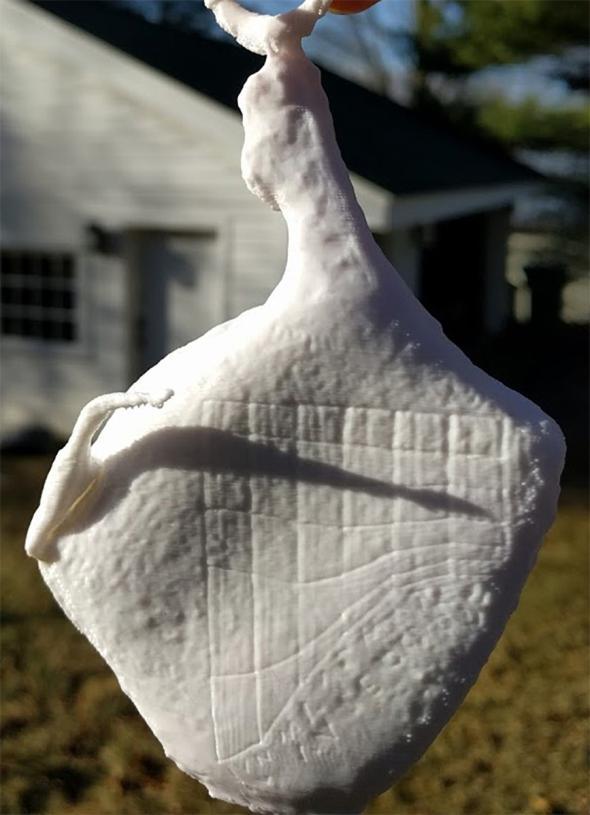 While we enjoy a good sense of humor in other human beings as they delight us, make us laugh, and often become our closest friends, this is an important element for all of us to possess as it can lead to better emotional health and a happier life. But there’s always something a little surprising about seeing evidence of humor in past civilizations, jolting us into the realization that we didn’t just recently create the ability to joke around or to enjoy whimsy or kitsch.
While we enjoy a good sense of humor in other human beings as they delight us, make us laugh, and often become our closest friends, this is an important element for all of us to possess as it can lead to better emotional health and a happier life. But there’s always something a little surprising about seeing evidence of humor in past civilizations, jolting us into the realization that we didn’t just recently create the ability to joke around or to enjoy whimsy or kitsch.
A great example of this would be the pork clock, made by ancient Romans. Not a recent find, this small metal sundial was found by workers who were excavating in the 1760s, unearthing the city of Herculaneum that had been covered in volcanic ash after the eruption of Mount Vesuvius in AD 79, near Pompeii. Searching the ruins of Villa dei Papiri, once a private home, they found a small piece of silver-coated bronze that ancient ‘artisans’ had formed into the comical shape of an Italian ham (or is it a water jug?), meant to be a portable sundial, and a novelty.
Today, with the help of 3D printing, researchers are able to understand more about relics like this ancient Roman sundial. We now know that the original did actually tell time, and took some level of complexity to create.
Christopher Parslow is a professor of classical studies and Roman archaeology at Wesleyan University. As the creator of the 3D model of the sundial, he states: “It does represent a knowledge of how the sun works, and it can be used to tell time.”
Parslow’s plastic 3D printed model, made by Christopher Chenier of the Wesleyan Digital Studio Lab, was created from photos of the original, kept at the National Archaeological Museum of Naples in Italy. The model functions just as the original would have with a grid using vertical lines for months of the year and horizontal lines showing hours past sunrise or before sunset. Parslow also included a missing original part: the gnomon. This is probably one of the pieces we all remember most from the classic sundial as it is the part that casts a shadow. Parslow discovered that an 18th-century curator described the original gnomon as being a pig’s tail so Parslow made a new one for the portable sundial.
The sundial gives what we would consider to be an estimation of time to the half or quarter hour.“The scale of the whole thing is so small, and it is so difficult to hold steady, that such accuracy is likely the theoretical ideal rather than the reality,” says Parslow.
According to Alexander Jones, who did not work directly with Parslow, the clock could be the oldest (or perhaps second) surviving sundial. Jones, a historian of ancient science at New York University’s Institute for the Study of the Ancient World explains that this type of ancient sundial would have been used like what we now know as a pocket watch. He also states that while ‘fixed sundials’ were common in Greece and Rome, there are only 25 other ancient portable sundials known. He proposes that they were status pieces, and not really used to tell time precisely.
“You don’t just own them to tell time. You own them to show that you own them,” said Jones.
Parslow presented his first round of results regarding the portable sundial in early January at a meeting of the Archaeological Institute of America and the Society for Classical Studies. The original will be on display at the Institute for the Study of the Ancient World in New York through April 23. Discuss in the 3D Printed Sundial forum at 3DPB.com.
[Source: National Geographic]
Subscribe to Our Email Newsletter
Stay up-to-date on all the latest news from the 3D printing industry and receive information and offers from third party vendors.
Print Services
Upload your 3D Models and get them printed quickly and efficiently.
You May Also Like
3D Printing News Briefs, June 11, 2025: Sustainability, Automotive Tooling, & More
We’re starting with sustainability news in today’s 3D Printing News Briefs, as EOS has strengthened its commitment on climate responsibility, and Zestep is making 3D printing filament out of eyewear...
3D Printing 50 Polymer Stand-In Parts for Tokamaks at the PPPL & Elytt Energy
Of all the world’s things, a tokamak is one of the hardest, most complex, expensive and exacting ones to make. These fusion energy devices make plasma, and use magnets to...
3D Printing News Briefs, May 17, 2025: Color-Changing Materials, Humanoid Robot, & More
We’re covering research innovations in today’s 3D Printing News Briefs! First, Penn Engineering developed 3D printed materials that change color under stress, and UC Berkeley researchers created an open source,...
Firehawk Aerospace Partners with JuggerBot 3D, Gets $1.25M from AFWERX for 3D Printed Propellants
Texas-based Firehawk Aerospace, an advanced energetic materials firm that works with aerospace and defense applications, announced a strategic partnership with JuggerBot 3D, an Ohio-based large-format 3D printer manufacturer. Together, the...




































